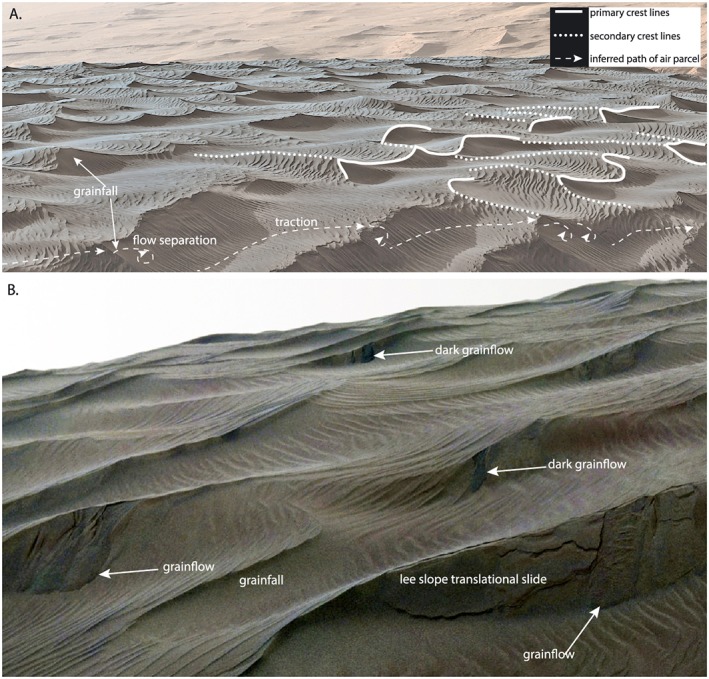Figure 6.

Mastcam image of the crestal area of Namib Dune. (A) Mastcam image highlighting sinuous crest lines and the asymmetry of the ripples. The solid lines trace primary large‐ripple crest lines and the stippled lines indicate secondary, crest lines orthogonal to the primary crest lines that likely form the cross‐hatch pattern seen in HiRISE images (Figure 2). The dashed white arrows show the airflow pathway over the ripples based on the sedimentary processes visible. Grainfall indicates the presence of flow expansion and lee slope ripples indicate secondary, deflected flow. (b) Mastcam image of the ripples on the stoss slope‐to‐crest area of Namib Dune. Different styles of grainflows are present typical “hourglass shaped” and translational slides. Differences in the color of the grainflows may indicate the relative activity of the flows, where the darker grainflows are likely younger. Images: mcam05410, Sol 1192 (Figure 6a).
